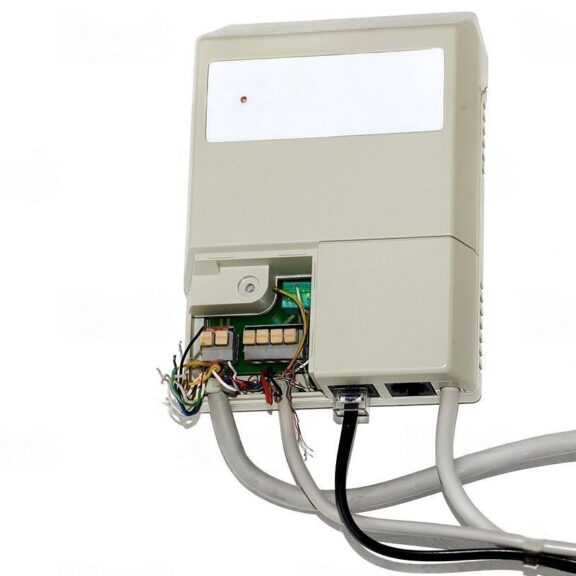
What’s all this talk about BT switching off its ISDN phone service?
BT released a statement in 2015 that it would stop taking new ISDN orders in 2020 to switch off and deactivate its ISDN network entirely by 2025.
So, if you’re determined to install an ISDN phone line, you’d better do it quickly and ensure you won’t need it after 2025!
Let’s wind back a bit. What exactly is ISDN?
ISDN (short for Integrated Service Digital Network) is a circuit-switched telephone network system that simultaneously delivers voice and data services over digital lines. BT launched it in 1986 to migrate outdated landline technology to digital.
Businesses got excited about ISDN when it launched because it could support an analogue phone line and early video-conferencing systems. At the time, it also offered the fastest internet access (128 kbps).
The faster speeds and better connections that ISDN allowed meant data could be sent quickly and with little distortion, providing a better overall experience than previous antiquated systems.
With the introduction of new broadband internet access connections like DSL, WAN and Cable Modems, ISDN itself is an outdated legacy system. Despite this, it’s often used as a backup phone system if the mainline fails.
What’s the real reason behind the ISDN switch-off?
Like all commercial decisions, it’s driven by cost and profits. While the infrastructure that underpins ISDN has been significantly overhauled and upgraded since BT first launched it in 1986, the network has remained pretty much unchanged.
BT has invested heavily in VoIP, so it doesn’t make sense to invest further in its legacy ISDN network. By converging all of its services to IP, BT will be able to focus its resources and energy on a technology that will allow it to meet the demands of businesses in the future.
What’s BT going to replace ISDN with?
BT has planned to move all of its voice networks to VoIP (voice over IP) for some time.
Unlike traditional solutions, VoIP does not run over copper lines, making them and line rental redundant. The only thing you need is an active internet connection.
40% of the UK market has already recognised that switching to a VoIP solution provides a number of critical benefits.
Aside from being a more modern, progressive technology, VoIP has many advantages for businesses over PSTN and ISDN:
- It’s much quicker to provision new lines.
- You can reduce your line rental because you’ll need fewer physical lines.
- It is incredibly scalable and flexible – e.g. pairing a SIP line with a cloud-based telephone system can give you the ability to easily transfer calls between offices and locations, to use your work line whilst anywhere in the country and to see which members of your team are available to take calls.
What should businesses do to prepare for the ISDN switch-off?
If you’re one of BT’s 2 million ISDN customers, you have until 2025 to review your options and make the change (before the network is switched off).
As crazy as it might sound, for many businesses today, ISDN is still the best service they can get. According to Ofcom’s 2018 Communications Market Report, there were 33.1 million fixed landlines in the UK in 2017 (including ISDN), and approximately 6.4 million belonged to businesses. It’s imperative that BT can provide businesses with access to an alternative service long before the 2025 deadline.
If your current ISDN phone contract is up for renewal soon, now is the right time to start exploring switching to VoIP and SIP technologies.
The practicalities of switching from ISDN to VoIP
Switching from ISDN to a VoIP/cloud-hosted phone system isn’t as complicated as you might think.
The first step is to get a spec outlining your business needs and maybe some “nice to haves”. Then you can do online research or call cloud telecom providers to see what they offer. This should get you to a point where you have some options to consider and prices to compare.
Assuming your business is in an area that has access to VoIP technology, you need to consider two things:
Is your internet connection good enough to deliver VoIP?
While VoIP doesn’t use much data compared with other services like video, you still need enough bandwidth to deliver voice on top of everything else your office does. Some VoIP providers suggest 5Mbps down and 2Mbps up as a bare minimum for a small office. Still, the bandwidth you need depends on your individual needs and Quality of Service priorities. If you don’t have enough bandwidth or quality of service commitment, you could experience poor audio quality or intermittent service and miss the full benefits.
Does your office phone system support VoIP?
Most new office phone systems already support VoIP, but if yours doesn’t, you can replace your entire phone system with an IP one (worthwhile if your handsets are tired). It might also be an excellent time to think about switching from a fixed, on-premise phone system to a cloud-hosted telephony service. This way, you can manage your phone system via an online control panel hosted in the cloud.
Don’t forget: because of the savings to be made on VoIP calls and line rental, you should be aiming to lower your overall telecom costs while at the same time increasing the call features and functionality at your disposal.
Should I talk to someone about my options for switching over from ISDN?
Yes, almost certainly. We’re already helping many UK businesses transition from legacy ISDN systems to our cloud-hosted phone system. Everything from number porting to hardware setup is managed by our customer onboarding team, whose job is to make a move as painless as possible.
Please get in contact asap with our team to discuss your ISDN migration; no obligation, no fuss.

